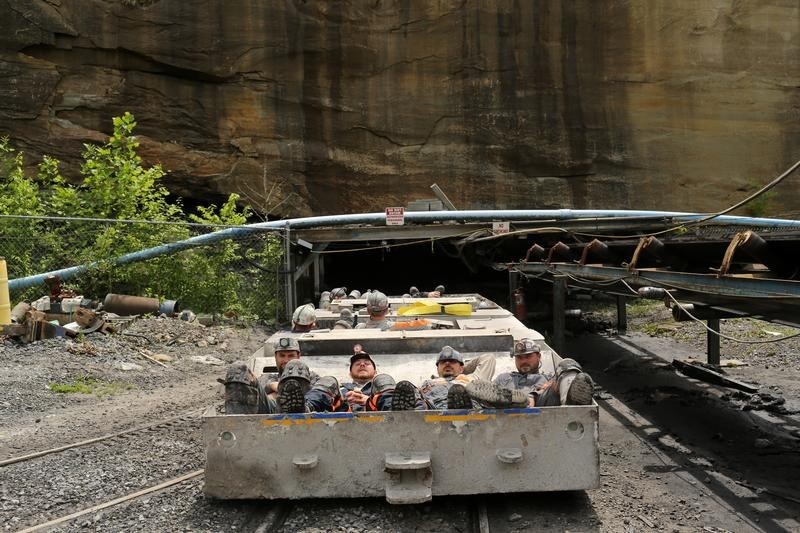(Repeats with no changes to text)
By Clyde Russell
LAUNCESTON, Australia, Oct 29 (Reuters) - There are several
reasons why coal prices in Asia are unlikely to rally much in
the coming years, but the most compelling one is also likely one
of the most obscure: Colombia.
Why should a South American country that hasn't exported
much coal to Asia recently provide the cap for prices?
Because as soon as Asian coal prices rise to a level that
would make sense for Colombian miners to resume exports, they
will, and they have as much as 25 million tonnes of spare
capacity in their production and export chain.
It's true that Colombia and other producers in the Americas,
such as the United States and Canada, have been largely forced
out of the world's biggest coal market by the relentless decline
in prices.
But while U.S. and Canadian miners may struggle to resume
exports to Asia even if prices do recover, given they have been
closing pits, their Colombian counterparts are largely ready to
increase output.
The only thorn in their side is a battle over noise with
residents that has restricted volumes on the Fenoco rail line
linking the main mining region with ports, and put a question
mark over the building of a duplicate track. urn:newsml:reuters.com:*:nL1N0YO2IW
But the problem doesn't seem intractable and given the
support of the Colombian government, it's likely that a deal
will be worked out to allow increased capacity on the railway.
Even without the expansion, Colombia, the world's
fourth-largest coal exporter, still has the ability to supply
millions of tonnes to seaborne markets.
At what price can Colombian coal reasonably expect to return
to Asia?
Certainly the current $51.84 a tonne for thermal coal at
Australia's Newcastle Port GCLNWCWIDX is unlikely to be high
enough to make economic sense.
But it's also likely that the price Colombia coal can make
sense is lower than the $90 a tonne that prevailed in 2012, the
last time significant volumes of fuel from the South American
country made the long journey around the bottom of Africa to
Asia.
China, the world's top coal importer, hasn't bought any
Colombian coal so far this year, and imports in 2014 dropped 79
percent from 2013 to just 105,666 tonnes, according to customs
data.
This is well down from levels seen in 2012, with the record
monthly volume from Colombia standing at 860,844 tonnes in July
of that year. COA-COCN-IMP
BIGGER CURRENCY BOOST
Since 2012, the main miners in Colombia, the joint venture
Cerrejon, U.S.-headquartered Drummond DRMND.UL and Murray
Energy MUYEY.UL have worked at reducing costs, a common theme
among beleaguered coal miners worldwide.
But they have also been helped by a sharp decline in the
value of the Colombian peso COP= , which has dropped about 66
percent since the start of 2013 to 2,919.42 to the U.S. dollar
as of the close on Oct. 28.
In contrast, the Australian dollar AUD= has declined by
about 32 percent over the same period, and the Indonesian rupiah
IDR= by about 41 percent.
This means Colombian miners have received a significantly
bigger boost from currency depreciation than their counterparts
in Indonesia and Australia, the world's two biggest coal
exporters.
Add to this still depressed prices for bulk carriers and the
price at which Colombian exports could again make sense in Asia
drops somewhere closer to $60-$65 a tonne.
Assuming Newcastle coal prices could reach that point,
either through output cuts in Indonesia and Australia, or less
likely through a demand-led revival, and it becomes a virtual
certainty that traders will seek to move Colombian coal to Asia.
Strong arguments can be made that coal's outlook in Asia is
grim, including China's slowing economic growth and
determination to move away from the polluting fuel, questions
about the strength of Indian import demand as domestic output
grows and the increasing competitiveness of liquefied natural
gas as a wave of new supply starts to hit the market.
While all of these are valid arguments, they aren't quite as
definitive as having a producer with millions of tonnes of
capacity ready to roll as soon as prices stage even a modest
rally.
(Editing by Joseph Radford)
